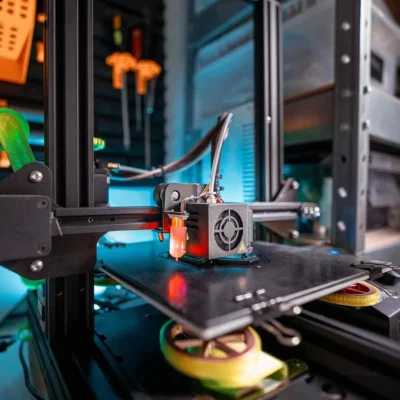The Fourth Industrial Revolution is helping businesses with better quality, cost savings, and profits. But, companies selling Industry 4.0 products face a problem: sales take a long time. This can lead to missed chances and lost interest from clients, making it a threat to the deal’s success.
Many reasons make these sales cycles long. In this article, we’ll explain why and give solutions to speed things up. By following the advice in this article, manufacturers can resolve the issue of lengthy sales cycles and ensure successful adoption of Industry 4.0 technologies.
Revealing Why Industry 4.0 Technology Sales Cycles Take So Long:
1. More Stakeholders:
Industry 4.0 products and services are complex and highly technical. They connect to many things, which means more people are involved when buying them. This makes the sales process longer.
For example, think about selling a smart lighting system to a building owner. This system needs to work with the building’s heating, ventilation, air conditioning, fire safety, and security systems. This might need some changes.
So, the sales team has to talk to the IT team, people who put it all together, and other teams to make sure everything works as it should. If some parts of the lighting system come from other companies, the sales team also has to talk to them about any changes.
All these discussions and coordination take time, and that’s why selling Industry 4.0 technology can be slow.

2. Bigger Network of Providers:
Industry 4.0 smart systems use advanced technology like Big Data and the Internet of Things (IoT) to make work better and more efficient. To make this happen, the company making these systems needs to work with other companies that provide related services.
For instance, if a company makes a smart lighting system, they need to talk to the people who design buildings, the builders, the HVAC (heating and cooling) providers, and others. They all need to make sure the smart lighting system works well in the building.
When a customer is talking to the sales team about buying this system, all these providers will be part of the conversation. They’ll share their ideas on how to make everything work together. Involving multiple people may extend the sales process, but it’s essential for the proper functioning of Industry 4.0 systems.
3. New Products & Services:
Smart products create valuable data. This data can be analyzed and sold, which is a new opportunity for companies.
Sales teams are essential in this process. They understand customer needs and collaborate with other teams, like engineers and analysts, to learn about products and customers. This helps set the right price for data-based solutions.
In the end, sales teams ensure the cost matches what the customer needs and can afford. This is how smart product data becomes profitable.
4. Maximizing Revenue with Aftersales Support Services:
In the past, equipment manufacturers didn’t focus on helping customers after the sale because they didn’t know how their products were used. But with Industry 4.0, this has changed.
Industry 4.0 products provide data about how equipment is used, which helps manufacturers offer better aftersales support. This sets them apart from traditional manufacturers and benefits customers.
Manufacturers can also talk to customers about how to support their equipment, which makes the buying process longer. This is good for both customers and manufacturers. It builds better relationships and makes customers happier.
In short, Industry 4.0 gives manufacturers new ways to support customers after the sale, making them stand out and improving customer satisfaction.
Conclusion – How Qviro Can Help Speed Up The Sales Cycle?
At Qviro, we promise to give you a complete look at the collaborative robot market to help you make smart choices. Our experts carefully check each review to make sure it’s accurate and trustworthy, no matter where it comes from or how it’s rated. You can rely on us to provide real insights and help you make confident decisions in the competitive world of collaborative robots.






